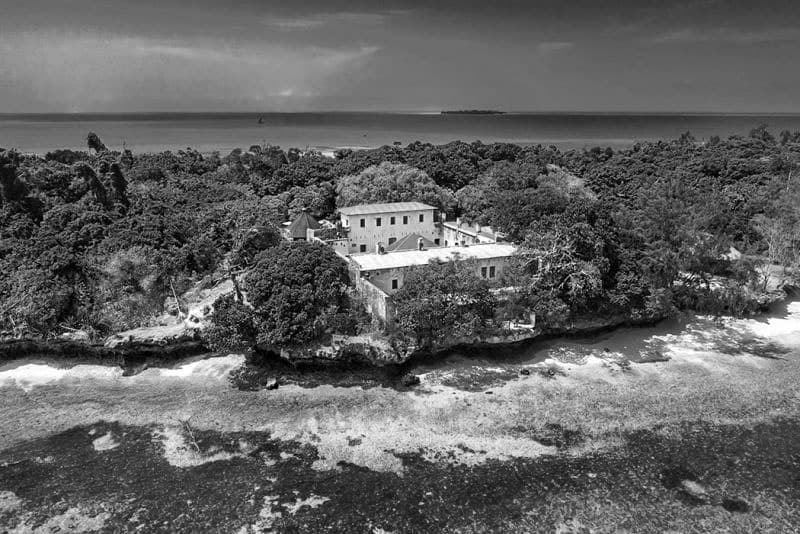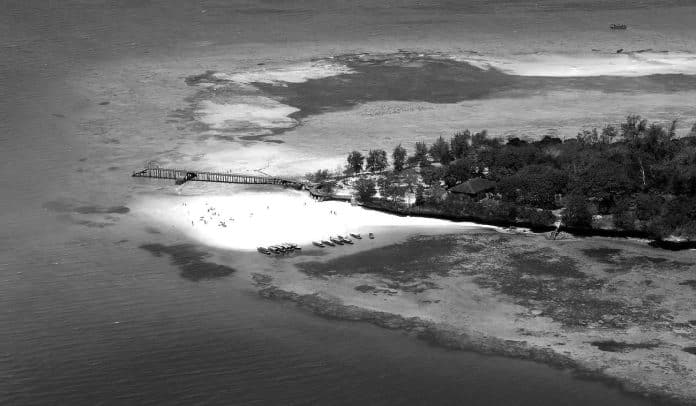Changuu Island – Overview, Giant Tortoises and More
Changuu Island (aka Quarantine Island, Prison, or Kibandiko) is a small island 3.5 mi (5.6 km) northwest of the Stonetown of Zanzibar, Tanzania. Changuu Island is approximately 2,600 ft (800 m) long and 750 ft (230 m) wide at the most expansive point. Changuu island was used to imprison rebellious slaves during the 1860s. It was also a coal mine.
The Founding of Changuu Island
Sir Lloyd William Matthews, Britain’s First Minister to Zanzibar, bought the Changuu island in 1893. Subsequently, he built a prison there. Eventually, no prisoner was ever imprisoned on the island; instead, it was used as a quarantine base for cases of Yellow Fever. The base only served as a quarantine station for roughly a fraction of the year, making it a renowned holiday spot for the rest of the year. In recent times, Changuu Island has turned into a state-owned tourist center and is home to a group of endangered giant Aldabra tortoises. Originally, the tortoises were a gift from Britain’s governor of Seychelles.
The island’s name comes from the Kiswahili term for a fish commonly found in the seas surrounding the island. Although it is indicated as “Kibandiko Island” on older maps, the name is not used anymore. The island had no inhabitants till the 1860s when it was given to two Arabs by Sultan Majid ibn Said (Sultan of Zanzibar). The Arabs made the island prison for disobedient slaves before moving them to a foreign country or auctioning them off at the trading center for slaves in Zanzibar’s Stonetown.
After the Heligoland-Zanzibar Agreement of 1890, Zanzibar turned into a protectorate of the British empire. Thus, Sir Lloyd Matthews was appointed First Minister of Zanzibar in October 1891. In 1893, Matthews bought Changuu island from the Arab owners in the name of the government of Zanzibar with the plan to build a prison on it. The prison was meant to house recidivist and violent criminals from other parts of the mainland of Africa, which was under Zanzibar’s jurisdiction then. Although the prison complex was completed one year later in 1894 the Changuu island became commonly known as “Prison Island,” no prisoner was ever housed there.

The British government had concerns about the possibility of epidemic diseases affecting Stonetown, which was the main port of East Africa at the time. To tackle the problem, Changuu Island was subsequently converted into a quarantine center for all British domains in eastern Africa. The unused prison served as the station’s hospital. The island was formally rechristened Quarantine Island in 1923. Quarantine cases were taken from ships and observed on Changuu island for seven to 14 days before being permitted to continue their journey. Yellow Fever was the primary disease monitored.
Since ships only came to East Africa between December and March, Changuu island was often without quarantine cases for most of the year. During this empty period, natives of Zanzibar and Europeans visited the island for relaxation. A building called European Bungalow was erected during the latter part of the 1890s to take care of the needs of fun-seekers. However, the influx of tourists had to be restricted because the only freshwater available was rainwater kept in underground reservoirs. The pits found on the Changuu island were evidence of past coral mining activities on the island. The pits were cleansed and converted to swimming pools. In 1931, another set of quarantine structures was built in the southwestern part of the island. The new buildings increased quarantine capacity to 904 individuals.
Giant Tortoises
The British ruler of Seychelles gave a gift of four giant Aldabra tortoises to the island in 1919. The tortoises were native to Aldabra Island. The tortoises multiplied rapidly, and they had increased to 200 by 1955. However, people started stealing the tortoises to sell overseas for food or as pets, causing their population to reduce. By 1988, only 100 tortoises remained, only 50 were left in 1990, and by 1996, just seven of them remained. To increase their population again, another eighty hatchlings were brought to Changuu island in 1996, but forty of them disappeared. The government of Zanzibar, with help from the World Animal Protection, constructed a big compound to protect the animals. By 2000, the population had recovered, with 90 hatchlings, 50 juveniles, and 17 adults.
The giant Aldabra species is currently considered vulnerable and placed on the Internation Union for Conservation of Nature’s Red List. More tortoises, majorly juveniles, are still being sent to Changuu from other places for conservation. A special foundation looks after the welfare of the tortoises on the island. Visitors are permitted to feed and observe the animals.
Changuu Island Today
Changuu is no longer used as a quarantine center; however, the government still owns it and converted the quarantine buildings built most recently into guest houses. Although the guest house has folded up, a private company has since reopened it as a standard hotel. There are more than 12 vacation cottages located in the northwestern part of Changuu Island. The area also has a library, a swimming pool, and a tennis court. The European Bungalow is now used as a restaurant named in honor of Matthews. An undersea pipe transports freshwater to Changuu Island from mainland Zanzibar. The government charges an entry fee of $4 for access to the island. The old prison building is still there, sheltering some tortoises, and tourists can visit the cells.
For more articles related to regions of Tanzania click here!































